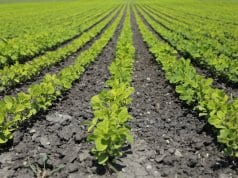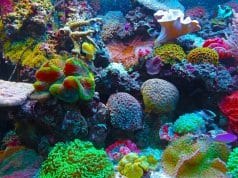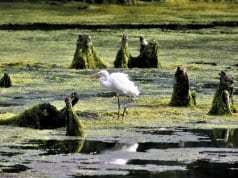Climate change refers to the way the earth’s temperature and weather patterns have deviated from their historical norms over the last few decades. The term “global warming,” was previously the most common term associated with these changes, but, because the changes also involve alterations in precipitation levels and wind patterns, the term has been largely discarded in favor of “climate change.”
There’s currently a great deal of news coverage and public discussion about climate change. But often, people tend to focus on the ways that climate change will affect humans. This is unfortunate, as it fails to take into consideration the myriad ways climate change will affect some animal species.
We’ll discuss three of the most important ways climate change will affect animals below, and we’ll share a few things that you can do to help slow the problem so that animals can survive.
Reproductive Problems Caused by Climate Change
Climate change is reducing the ability of some species to reproduce effectively.
Because many animals rely on environmental cues – such as the arrival of spring or increased rainfall – to trigger their reproductive behaviors, climate change is causing several species to experience reproductive challenges.

For example, many reptiles exhibit a phenomenon known as temperature-dependent sex determination (TDSD). This essentially means that the temperatures surrounding their eggs will determine the sex of their offspring. If the global temperatures continue to rise, this will ultimately leave many of these animals with populations that are comprised exclusively of individuals of one sex.
Temperature-dependent sex determination occurs in a variety of reptile species, including most aquatic turtles and several geckos. For example, scientists have predicted that 2 degrees of temperature change will drastically skew sex ratios for the painted turtle, and 4 degrees of temperature change would completely eliminate the production of males.
Climate Change Is Forcing Many Animals to Move
In an effort to avoid inhospitable temperatures, some animals have begun expanding or shifting their ranges.
Some animals have been able to cope with rising temperatures and changing precipitation patterns, but others are having to move to avoid the impacts of climate change. In fact, scientists suspect that nearly half of the world’s species are currently shifting their ranges.

Moose, for example, are moving into new areas as climate change makes them more hospitable. However, they’re also leaving some of the areas in which they’ve always lived, as the temperatures have become too hot. Rabbits and hares are exhibiting a similar tendency in the northern reaches of the U.S. and Canada.
Another example of animal migration occurs with the sable – a marten-like animal native to Siberia. As the Arctic has warmed, these animals have begun colonizing areas in which they aren’t native.
Many Food Chains Are Becoming Disrupted by Climate Change
Climate change is making it very difficult for some animals to find enough food.
Climate change isn’t only affecting large, familiar animal species – it is also affecting plants and small animals, such as insects. This has resulted in disruptions to some food chains, thereby presenting additional challenges to some animals.

The red knot – a shorebird – provides a great example. These birds travel to the Arctic each year to feed on hatching insects. But, because these insects are now hatching weeks before they used to, there are rarely enough insects to feed all of the birds.
This is causing many of the new hatchlings to starve, as they don’t have any other viable food sources. Adults can supplement their diet by consuming mollusks, but the baby birds don’t have large enough beaks to do so. This is not only causing problems for the red knots, but also their predators, who must now contend with fewer prey animals to feed on.
Ways You Can Help Stop Climate Change
Climate change may seem like an unstoppable force, but there are things individuals can do to help.
Climate change seems like a problem that is too large for individuals to do anything about it. But this isn’t true. In fact, there are a number of things individual people can do to help slow the earth’s warming temperatures and protect the lives of animals.
A few of the easiest things you can do include the following:
- Walk whenever you can instead of driving. The emissions created by cars are a significant source of the greenhouse gases driving climate change. So, try to walk rather than drive whenever possible. This obviously isn’t always possible, but it is a worthy goal. As a bonus, try to take public transportation when you do need to travel via vehicle. This is more efficient than driving yourself.
- Turn off appliances when they’re not in use. Try to make a practice of turning the power off on everything in your home that’s not in use. In fact, you may even need to unplug some items (such as a number of electronic devices), as they can still draw power even when they’re turned off.
- Consider installing solar panels. Not everyone lives in a sunny enough location to benefit from solar panels, but those who do should strongly consider adding them to your home. Not only will solar panels allow you to do your part to battle climate change, but they’ll also save you some money over the long run.

Share Your Ideas for Fighting Climate Change!
As you can see, climate change isn’t only a problem for humans – it’s also a problem for many of the world’s wild animal species. Hopefully, humans will start to take action to slow down the rate at which temperatures are rising, so that the planet’s animals will be able to continue to survive.
We’d love to hear some of the things our readers try to do to help in the efforts to prevent climate change. Let us know the things you try to do in the comments below.





![Red Angus Closeup of a beautiful Red Angus cowPhoto by: U.S. Department of Agriculture [pubic domain]https://creativecommons.org/licenses/by/2.0/](https://animals.net/wp-content/uploads/2020/03/Red-Angus-4-100x75.jpg)

